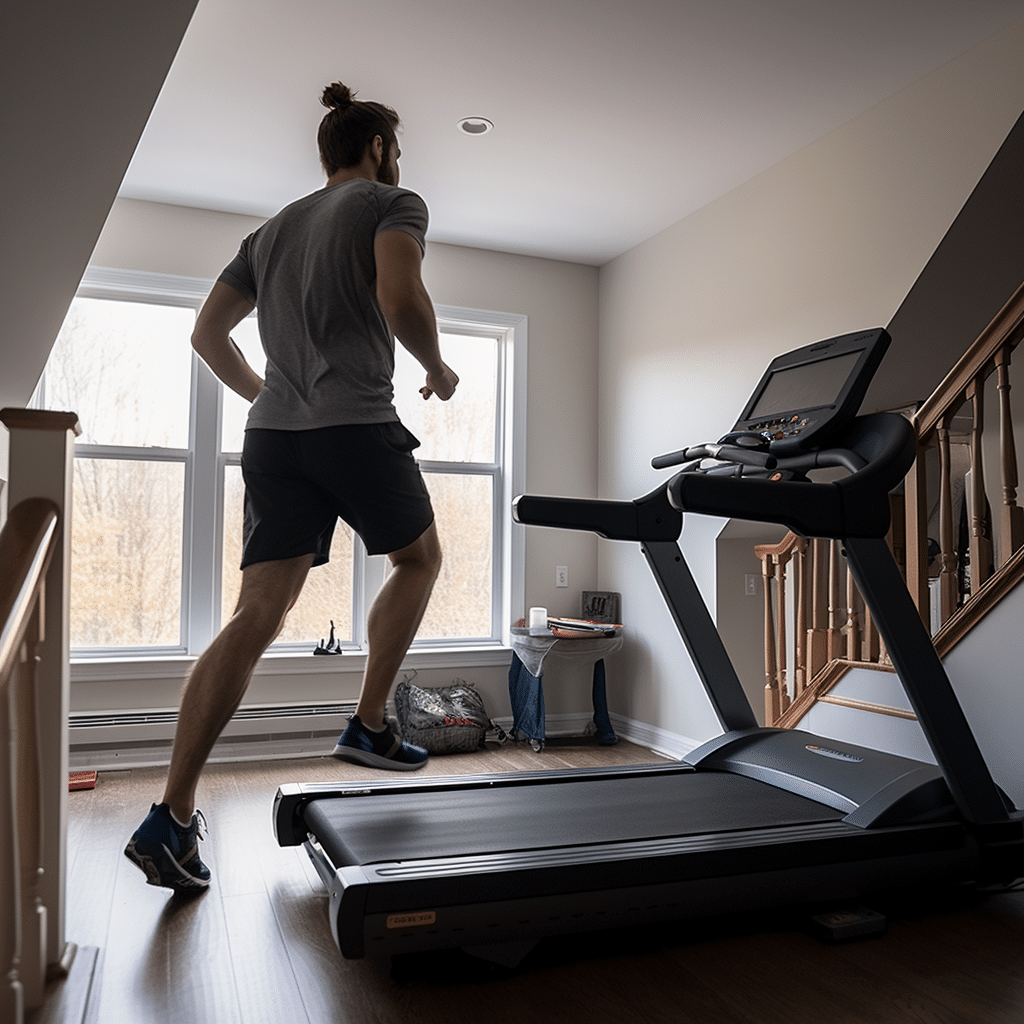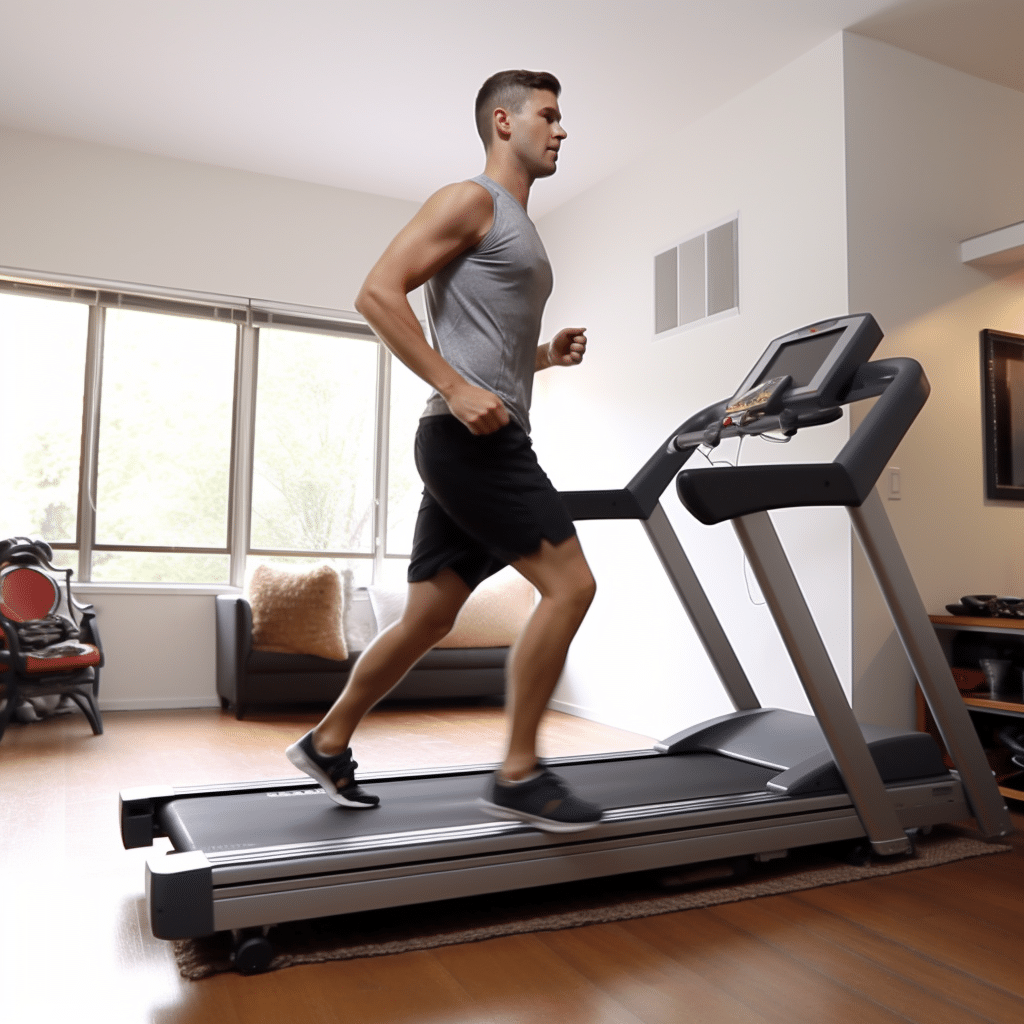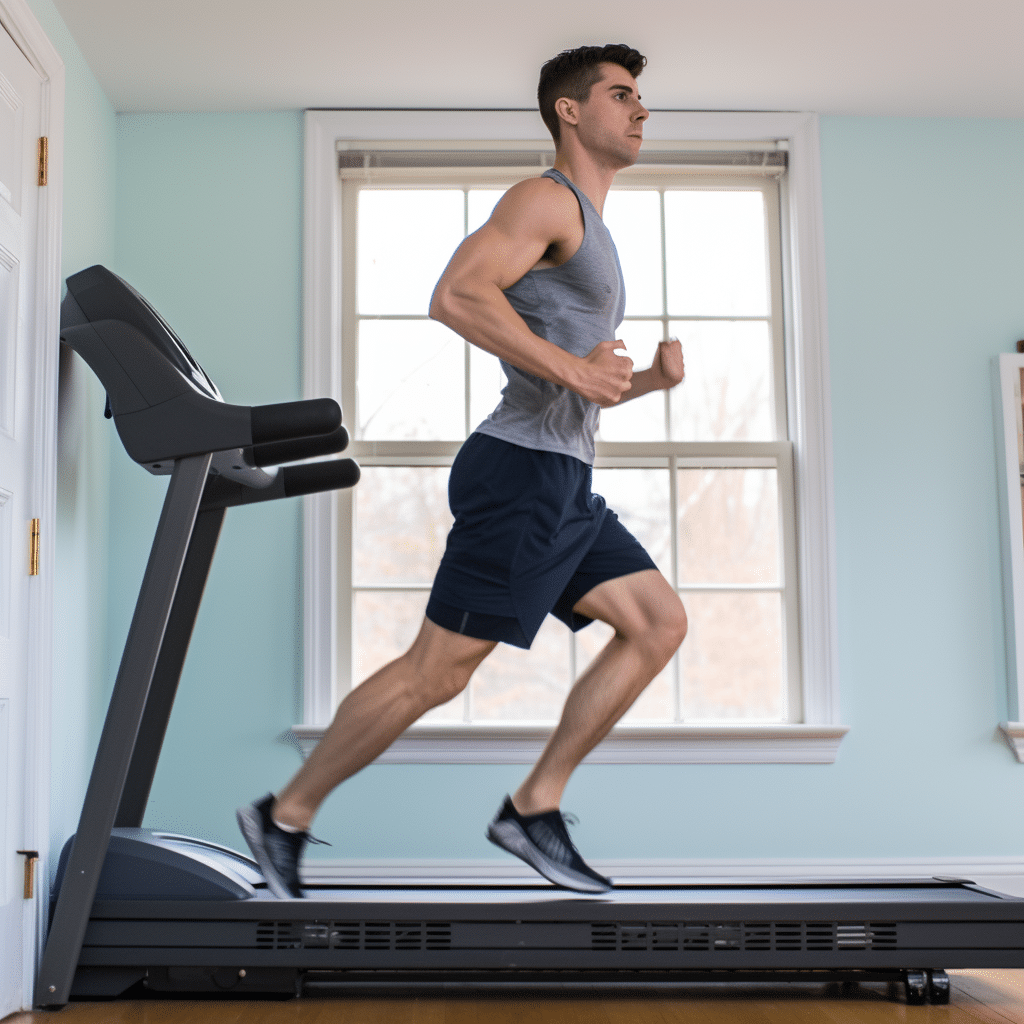Introduction
How To Move A Treadmill Upstairs: Moving a treadmill upstairs can be a challenging endeavor, requiring careful planning and physical effort. Whether you’re relocating to a new home, rearranging your living space, or simply moving the treadmill to a different room, the task may seem daunting. Treadmills are heavy and bulky pieces of exercise equipment, often weighing hundreds of pounds. Navigating stairs and tight spaces can present a significant logistical challenge. This process involves not only ensuring the safety of the treadmill itself but also safeguarding your well-being and the structural integrity of your home. We’ll explore the steps and strategies to safely and effectively move a treadmill upstairs.
Moving a treadmill upstairs involves many factors. You need to choose the right path, disassemble and reassemble the equipment, and coordinate with others. Treadmills come in various sizes and weights, so the approach may differ. We will provide steps, safety precautions, and tips for success. You’ll learn how to evaluate the equipment, prepare it for movement, secure it, and execute the transfer safely. You’ll have a complete understanding of the process and feel confident in moving your treadmill upstairs. Beforehand, we’ll assess the weight, dimensions, and structural needs of the treadmill. Safety comes first, so we’ll explain how to prepare the area, protect your home, and get ready for the move. Some treadmills may require partial disassembly to fit through doorways or make them lighter. We’ll teach you how to take apart the treadmill and secure the moving parts.
Can you have a treadmill upstairs?
Yes, it’s safe to use a treadmill upstairs. You won’t crash through the floor if that’s what you’re worried about. The biggest safety concern is the process of moving a heavy piece of exercise equipment upstairs.
Check Building Regulations: First and foremost, consult with your building manager or landlord to ensure that it’s allowed. Some apartment complexes may have rules or restrictions about placing exercise equipment in upstairs units. Treadmills can be noisy, particularly if you’re running or walking at a fast pace.
Protecting Floors: Treadmills can be heavy, and their constant movement can potentially cause damage to apartment floors. Consider using a treadmill mat or equipment mat to protect the floor and dampen vibrations. Be considerate of your neighbors and mindful of noise levels. It’s a good practice to your plans with your neighbors and see if they have any concerns.
Safety Precautions: Ensure that the floor of your apartment can support the weight of the treadmill and your body weight during workouts. If you have any doubts about structural integrity, consult with your landlord or a structural engineer. Place the treadmill in an area that minimizes any potential damage to walls and doesn’t interfere with essential structural components of the building.
Are treadmills heavy to move?

Because treadmills are already heavy all on their own, it’s easiest to move and transport your equipment without much extra padding. However, once your treadmill or walking pad is securely on the moving truck, you can wrap it in moving blankets or plastic wrap to protect it on its journey.
Disassembly: If possible, disassemble the treadmill into smaller, more manageable parts. This can reduce the overall weight and make it easier to transport. Use furniture sliders or mats to protect your floors when moving the treadmill.
Clear the Path: Ensure that the path from the treadmill’s current location to its destination is clear of obstacles. This includes removing rugs, furniture, or any other items that may impede the move. Invest in a sturdy dolly or hand truck designed for heavy lifting. This will make it easier to move the treadmill, especially up or down stairs.
Secure the Treadmill: Use moving straps to secure the treadmill to the dolly or hand truck. This prevents it from tipping over during the move. This will prevent damage to your flooring and make the moving process smoother.
Can we keep the treadmill on the balcony?
You can put treadmill or any equipment you want if there is adequate space on apartment balcony. But, what you can do is mostly determined by your balcony size. A balcony has a few additional limitations. That doesn’t mean you can’t set up a home gym there; you certainly can.
Space and Size: Ensure that your balcony or outdoor area has enough space to accommodate the treadmill without obstructing other functions or pathways. Measure the dimensions of your treadmill and compare them to the available space. Outdoor placement exposes the treadmill to the elements. If you live in an area with rain, extreme temperatures, or excessive humidity, you must provide adequate protection to prevent damage. Consider using a weatherproof cover when the treadmill is not in use.
Flooring and Stability: Ensure that the balcony floor can support the weight of the treadmill and the person using it. Balconies typically have weight restrictions, so check with your building management or review your lease agreement. You’ll need access to a power source to operate the treadmill.
Noise Considerations: Treadmills can be noisy, and using one on a balcony may disturb neighbors. Check with your neighbors to ensure it won’t be a nuisance, and consider using a treadmill mat to dampen vibrations and reduce noise. Ensure that the outdoor area has an electrical outlet and take appropriate safety precautions to prevent electrical hazards.
What is the best flooring for an upstairs gym?
Rubber Flooring
Its sturdiness and resilience also make it perfect for heavy lifting and accommodating various gym equipment, including cardio machine
Foam mats are affordable, easy to install, and provide cushioning for workouts. They are particularly comfortable for bodyweight exercises, yoga, and stretching. However, they may not be suitable for heavy equipment or heavy weightlifting. Rubber flooring is a top choice for home gyms.
Vinyl plank or tile flooring is water-resistant, easy to clean, and durable. It can provide a stable and flat surface for gym equipment. Vinyl is a versatile option that can work for a variety of exercises. It offers excellent durability, shock absorption, and noise reduction. It can handle heavy weights and equipment, making it ideal for weightlifting and cardio exercises. Rubber tiles or rolls are available in various thicknesses and designs.
Cork flooring is a natural and eco-friendly choice that offers a soft and comfortable surface. It’s also resilient, providing some cushioning for workouts. Cork has natural sound-dampening properties and is suitable for various exercises. Commercial carpet tiles are designed to handle heavy foot traffic and can support gym equipment. They provide cushioning and sound insulation. While they may not be as easy to clean as other options, they are comfortable for workouts.
How many people are needed to move a treadmill?
Most fixed treadmills have transport wheels making getting the treadmill out of your house a one-man job. The weight of your treadmill should also be taken into consideration when loading your treadmill into the car. At least 2 people will be needed to load your treadmill safely.
Lifting Techniques: When moving the treadmill, use proper lifting techniques. Lift with your legs, not your back, to reduce the risk of injury. Keep your back straight, and use your leg muscles to do the heavy lifting. Position the treadmill so that the heaviest part is closest to the ground when moving it.
Clear Pathways: Ensure that the pathways you’ll be using to move the treadmill are clear of obstacles, tripping hazards, or slippery surfaces. This is especially when navigating stairs. If you have to tip the treadmill onto its wheels to move it, be sure to secure it in an upright position when not in motion.
Use Moving Equipment: If possible, use a dolly or hand truck to help transport the treadmill, especially if it needs to be moved up or down stairs. Many treadmills have locking mechanisms to prevent accidental movement. This helps distribute the weight more evenly and makes it easier to lift.
What is the easiest way to move a treadmill?
If your treadmill has wheels, you can just tip it and roll it along. It the treadmill doesn’t have wheels, you’ll want to move it on a furniture dolly. If you have to go up or down stairs, you’ll have to be very careful and might want to hire movers.
Treadmill with Wheels: If your treadmill has wheels, the process is relatively straightforward. You can gently tip the treadmill onto its wheels and roll it to the desired location. Ensure that the wheels are secure, and be cautious when navigating tight spaces or doorways.
Using a Furniture Dolly: If your treadmill doesn’t have wheels, using a furniture dolly or hand truck can make the process easier. Tilt the treadmill onto the dolly, secure it in place with straps, and then wheel it to the new location. This method can be especially helpful for larger and heavier treadmills.
Stairs: When moving a treadmill up or down stairs, extreme caution is required. It’s have several people assist with the move. Use a sturdy dolly with strong straps to secure the treadmill during stair navigation. Ensure that the weight is evenly distributed, and take it one step at a time.
Hiring Movers: If your treadmill is exceptionally heavy or you’re uncomfortable with the idea of moving it yourself, consider hiring professional movers. They have experience with moving heavy exercise equipment and can ensure a safe and efficient transfer.
Can you move a treadmill without taking it apart?
It is definitely possible to move a treadmill without taking it apart, but depending on your make and model, it can actually be more of a hassle to leave it assembled during the move. This is especially true if it’s awkwardly shaped or includes many added fitness accessories.
Treadmill Design: when choosing a portable treadmill. Look for treadmills that have built-in wheels to make moving them easier. You can simply tip these treadmills onto their wheels and roll them to a new location without taking them apart. Also, keep in mind the width of doorways and hallways in your home when selecting a portable treadmill..
Stairs: Moving a treadmill up or down stairs can be particularly challenging. The decision to disassemble or not may depend on the weight and size of the treadmill and your ability to navigate it safely. Consult the treadmill’s user manual or manufacturer’s instructions. Some treadmills are designed to be easily disassembled for moving, which can simplify the process.
Professional Movers: If you’re uncertain about moving the treadmill without disassembly, consider hiring professional movers who have experience with exercise equipment. They can assess the situation and take the necessary steps to ensure a safe move. Measure the treadmill’s dimensions, including its width, height, and length, to determine if it can fit through these spaces without disassembly.
Should a gym be upstairs or downstairs?
You don’t want to risk falling through to the bottom floors. While you can build a home gym on the second floor, a garage or basement are still the safest, most secure spots to do so.
Structural Integrity: Ensure that the upstairs area can support the weight of gym equipment, including heavy weights and cardio machines. Consult with a structural engineer or building expert if you have any doubts. Consider the potential noise and vibrations generated during workouts. Upstairs gyms can sometimes transmit noise to lower levels, which may disturb other residents in your home or neighboring units.
Flooring: Select appropriate gym flooring that can dampen noise and protect the floor. Rubber mats or flooring can be a good choice for upstairs gyms. Upstairs gyms are suitable if you have adequate space and proper headroom. Avoid placing equipment too close to walls, and distribute weight evenly.
Structural Support: Basements and garages are often designed to support heavy loads, making them well-suited for gym equipment. They typically have concrete floors and sturdy foundations. Downstairs gyms are less likely to disturb others in your home or neighboring units. You can work out without as much concern about noise transmission.

Conclusion
First and foremost, it’s essential to prioritize safety. Treadmills are heavy and can be cumbersome, and moving them upstairs requires physical effort and coordination. Therefore, enlisting the help of a friend or family member is a wise choice to make the process smoother and safer. It’s also a good idea to assess your own physical capabilities and decide whether this task is something you can handle comfortably. Before you even begin the moving process, measure your staircase and the dimensions of the treadmill to ensure it will fit through doorways, hallways, and around corners. If the treadmill is too large to fit comfortably, consider partially disassembling it.
Using proper equipment, such as moving straps, dollies, and furniture sliders, can make the task significantly easier. These tools provide better control and help distribute the treadmill’s weight evenly, reducing the risk of injuries and damage to your floors and walls. Maintaining a slow and steady pace throughout the move is key. Rushing can lead to accidents and mishaps. Take your time, and if you encounter a difficult maneuver or a tight spot, don’t hesitate to pause and reassess the situation. Safety should always come first.
In moving a treadmill upstairs requires careful planning, proper equipment, and safety precautions. It’s a task that can be accomplished successfully with the right approach. If you have any doubts about your ability to move the treadmill safely, consider hiring professional movers with experience in handling heavy fitness equipment. By following the provided in this ensuring safety is a top priority, you can enjoy your treadmill on any floor of your home without unnecessary stress or risk.

